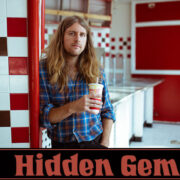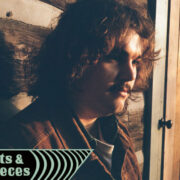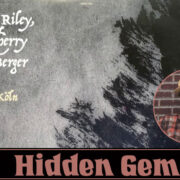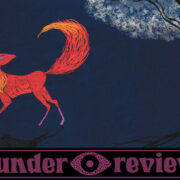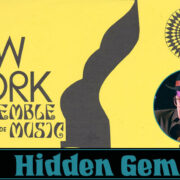Michael Hix on Lino Capra Vaccina’s Antico Adagio 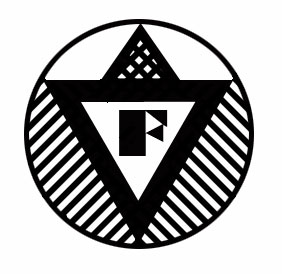
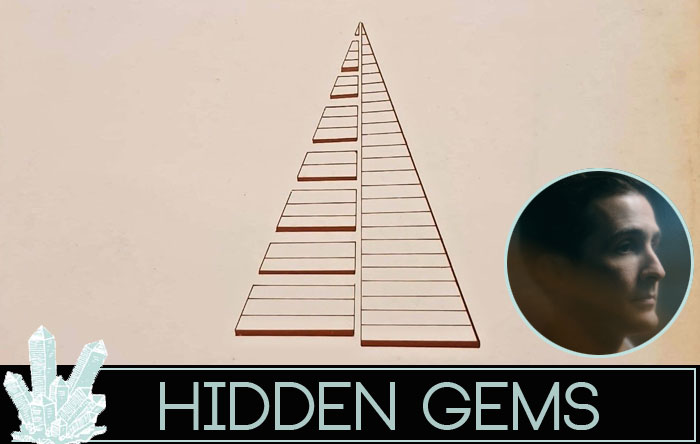
As music falls in waves in ones own life — discoveries of genre, deep dives into labels and self-contained scenes, or just a convergence of like-minded souls finding solace in a similar sound — its hard not to follow the natural patterns. Lately, I’ve taken some comfort in the rise of ambient country as a life raft for modern times. The genre has not only found its way into many of the labels and artists that I’ve naturally gravitated to and already enjoy, but those artists have lead me to seek out more kindred spirits long traveling the haunted highway. The assembled players in Nashville Ambient Ensemble have all found that crossroads at sometime or another, and many have been perfecting it for years. At the head, Michael Hix is orchestrating a group that’s steeped in the last light of dawn as it reflects from the flashing on the pedal steel and their upcoming LP for Centripetal Force is one of the highlights of the new year. Naturally, as the band’s next album approaches, I’d wondered about gems in his own collection that may have laid the ground work and he’s come through with just such a treasure. Read below as he explores the masterwork of Lino Capra Vaccina’s Antico Adagio and the effect the album has made on his own recordings.
“From the late 1970s through the 80s, Italy had a thriving avant-garde music scene with artists charting new territory in classical, psychedelia, new age and unclassifiable styles. Some of the albums coming out of this period could be considered prototypes of what we might now call ambient or experimental music, but almost none of them reached a wide audience until recently as reissue labels have unearthed this fascinating music and given it a new platform. Of all these excellent reissues I’ve enjoyed in recent years – Roberto Musci’s Tower of Silence compilation on Music From Memory; Giusto Pio’s Motore Immobile; Claudio Rocchi’s Suoni di Frontiera – it’s Lino Capra Vaccina’s Antico Adagio (1978) that has resonated with me the most and become an essential piece in my record collection,” notes Hix. “In fact, I love it so much that I’ve barely listened to it in the years I’ve owned it. We all know that sad feeling when you’ve overplayed an album and just can’t listen to it anymore. There is some music so good – I think of Pauline Oliveros, Arvo Pärt – that you need to store it away and revisit it on select occasions only. Vaccina’s Antico Adagio definitely falls in this camp for me for its unique beauty and mystique as well as the fact that it went decades before reaching a large audience.”
“I think I first heard about Lino Capra Vaccina’s work through Pete Swanson (musician; co-runner of the Freedom To Spend label) who I follow on Twitter for his superb music recommendations. I then scouted out copies of Vaccina’s recently reissued music, including Antico Adagio, at Commend, a great NYC record store I used to frequent while living there. On first listen, what struck me the most about Antico Adagio is that it sounded untethered from anything that could be called modern music. It felt timeless and even a bit alien, as if it came from a nearby, less industrialized universe. It was also immensely beautiful, and I felt as if it was the kind of music I had been trying to find for some time. Kieran Hebden (Four Tet) described this unique experience of hearing Antico Adagio for the first time as “new combinations of sound and atmosphere I knew could be wonderful to me if I ever discovered them, and then on discovery the sound was even better than I could have imagined.”
1

“After some formative years touring with bands of the Italian 1970s underground such as Aktuala and Telaio Magnetico, Vaccina turned to composing his own works. He cites being influenced by the works of Steve Reich, Terry Riley, La Monte Young and Pandit Pran Nath. While I can hear Reich’s influence in technical aspects and the instrumentation of Antico Adagio, it’s the spiritual power of Pandit Pran Nath’s ragas that comes through the most to me. Vaccina’s use of modal concepts in his music retains the mystical quality that you hear in Nath’s music or in that of a Pérotin organum, a quality that I feel is sometimes lost in the music of the “minimalist” composers though they also work heavily in modality. That mystical impulse in Vaccina’s approach was supplemented by his research into various instruments used on Antico Adagio such as tablas, wooden drums and darbukas and combined with vibraphone, marimba, piano, voice, violin and oboe in pursuit of his own musical language or “sound ecology,” as he describes it. 2 It’s these elements, employed in what seems to me to be a very genuine, non-imitative way, that lend Antico Adagio its timeless character.”
“The music of Antico Adagio can be sublime, surreal and at times mystifying. “Elegia” begins with a soft flow of bells, followed by a rhythmic figure of vibraphones and quiet drums leading finally to a rather spellbinding mass of droning vocals at the end. “Voce in XY” is propelled by rolling marimba sequences, somewhat reminiscent here of a Steve Reich piece. But whereas Reich’s music can sometimes feel mechanical, “Voce in XY” feels spontaneous and improvisational. Perhaps going deepest into the rarefied, mystical zone is “Canti delle Sfere,” a piece for various cymbals, gongs and other percussive instruments where subtle swells of metallic sound hover weightlessly, played in such a way as to accentuate the resonant frequencies of each object. I don’t think I’ve ever heard a piece for percussion so arrhythmic. Wrapping up the album is the completely majestic title track, where a simple marimba pattern serves as the ground for dual, interlocking oboes yielding highly elegant results.”
“In the liner notes to the 1978 original edition (self-released by Vaccina), Mauro Radice states, ‘In these days, when all noble traditions are dying, people are trying to recover the archaic modules of composition,’ referring here to the modal music concepts that feature heavily on Antico Adagio. I think this accurately describes Vaccina’s goal with Antico Adagio, and I find this goal to be a noble pursuit. Inspired by Vaccina’s work and others like Arvo Pärt, I went on my own exploration of modal music. At first fascinated by how Pärt utilized the modal schemes and counterpoint techniques of Western polyphonic chant, I wanted to understand not just the modal theory behind these forms of chant but also the use and purpose of the music in general. Most enlightening to me was an assertion from the musicologist, Dom Anselm Hughes, that the ‘bulk of the early medieval music that has come down to us… was not directed towards an audience or congregation apart from the performers themselves; it mattered only to those who were making it in the spirit of their own devotion, delighting in… a system of sound that seemed to spring from and parallel the divine order of things….” 3
One need not identify with the religious undertones of this model of music to appreciate how thoroughly foreign it is from the way we now engage with music which – like it or not – is mostly within and for a capitalist structure. Though obviously Vaccina has a completely different musical language than that of ecstatic chant, I think in a way he was trying to return to this type of ancient musical ethos and paradigm on Antico Adagio (“Ancient” Adagio). As he says in the liner notes, he certainly wasn’t doing it for the money.”
____________________________________________
1 From the liner notes of the 2014 Die Schachtel LP reissue of Antico Adagio.
2 From Vaccina’s own notes in the 2014 Die Schachtel LP reissue of Antico Adagio.
3 Dom Anselm Hughes, editor. Early Medieval Music Up to 1300. Oxford University Press, rev. 1955, pg. xvii.
***
Lino Capra Vaccina’s music has become much more accessible in recent years, and he also remains active releasing new works such as the fantastic 2017 release on Dark Companion, Metafisiche Del Suono. The label, Die Schachtel, has also issued editions of previously unreleased material from the Antico Adagio sessions – Frammenti da Antico Adagio and Echi Armonici – and these are equally excellent.
You can still find copies of the Antico Adagio CD reissue (includes Frammenti da Antico Adagio) at Soundohm. Metafisiche Del Suono is available on Bandcamp. Nashville Ambient Ensemble’s upcoming LP is available HERE
Support the artist. Buy it HERE.

